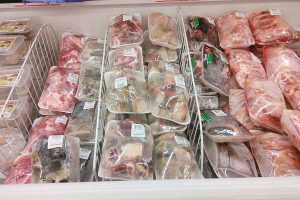THE Department of Agriculture (DA) said on Wednesday that exchange rates and freight costs will be factors in setting the maximum suggested retail price (MSRP) for imported pork.
“We have to look at exchange rates, freight costs, and the overall price of pork worldwide,” Secretary Francisco Tiu Laurel, Jr. told reporters on the sidelines of a market inspection at Paco public market in Manila.
The peso closed at its weakest level in two months on Monday at P56.415 to the dollar.
Mr. Laurel said the agency will pilot the MSRP for imported pork in eight public markets in July.
The government will also enforce labeling rules for imported and domestically grown pork to deter profiteering by retailers.
“During the pilot, we also fix the labeling rules for pork,” he said, “noting that consumers currently cannot identify the origin of pork they are buying.”
Mr. Laurel said the MSRP for imported pork is primarily designed to address profiteering, citing retailers who sell frozen products at the price of domestically grown pork.
He noted that during the inspection, he found that most of the pork on sale was imported.
“We see imported pork being sold at only P300 per kilo for liempo and P260 for kasim/pigue. It’s better that our people already have options.”
He cited the risk of dealers charging buyers of imported pork at the rate for fresh, domestically grown pork.
“We need to set the MSRP for (imported) pork because there are people who might take advantage in other markets. Instead of selling imported pork at P300 per kilo for liempo (belly), they will label it local and sell it for P450, P400.”“That’s profiteering. We would like to avoid that. That’s why we have to set an MSRP.” — Kyle Aristophere T. Atienza

